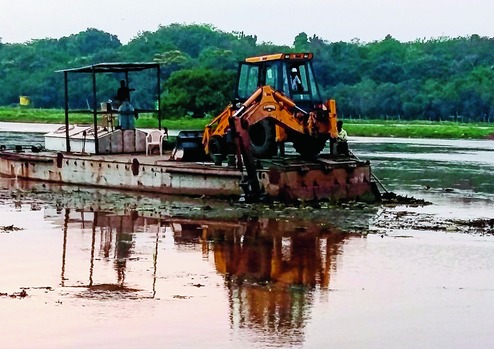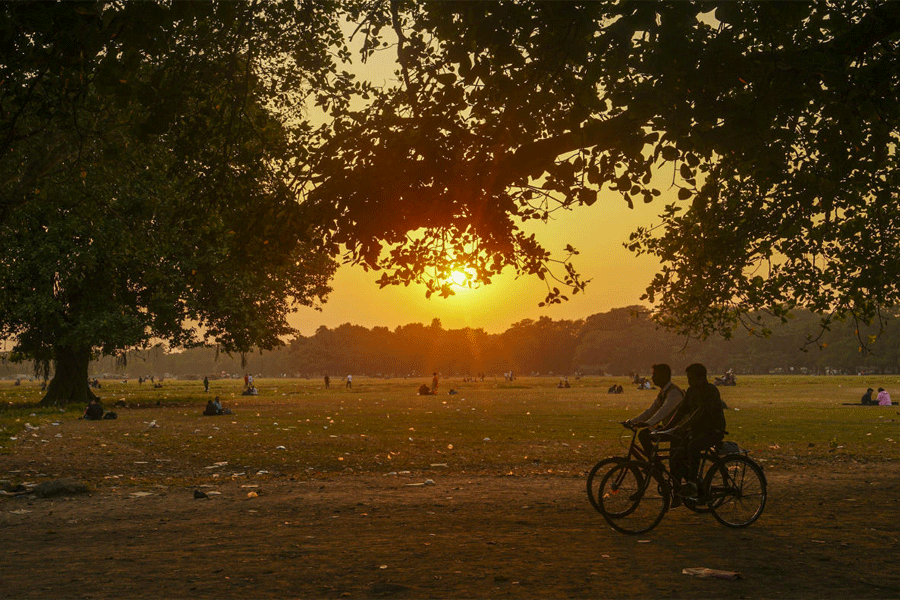
Restoration of Kanjia lake being carried out. Picture by Ashwinee Pati
Bhubaneswar, Aug. 31: The restoration of Kanjia lake entered its final stages after the Chilika Development Authority, which is carrying out the exercise, removed thickets from 40 hectares in the water body.
The lake is a source of water supply to the Nandankanan zoo.
Additional chief executive of Chilika Development Authority Sasmita Lenka said the restoration of the lake was likely to be completed by September end.
'The floating weed is being cleaned manually and we have been deploying around 10 people every day to remove that. We have also brought a barge-mounted excavator for removal of thickets which have been in the lake water for more than two decades,' said Lenka.
Forest officials said the restoration work of the lake is being carried at an estimated cost of Rs 44 lakh.
Kanjia lake is spread over 105 hectares, but the main water body is concentrated on 75 hectares. The remaining area of the lake is separated by a road and the two get connected during monsoon. As many as 24 species of emergent macrophytes, 10 species of sub-merged macrophytes and 14 species of floating macrophytes have been recorded so far in the lake. The lake has been declared as a 'wetland of national importance' by Union ministry of environment and forest since 2006. Macrophytes are aquatic plants that grow in or near water.
The Chilika Development Authority officials said the boating club area and the area located below the rope way had already been cleared.
'The visitors going on boat ride used to be very upset because of the presence of weeds in the lake. The stench emanating from the weeds was also irritating. Now that the area is being freed from weeds, we hope more tourists will take boat rides here,' a zoo official said.
Dumping of solid waste along the water channel and quarrying in the area has become a potential threat to the lake. The water level of the lake has also decreased significantly due to choking of the inlets because of rapid and unplanned urbanisation.
'The water of the lake is used to meet the demand of the zoo inhabitants. The lake water is chlorinated before being supplied to the animals. Cleaning activity of the lake will be conducted on a regular basis once the lake is restored,' said deputy director of the zoo Jayant Dash.
Sloth bear dies
A female sloth bear named Mili died at Nandankanan zoo after prolonged illness today.
It had been undergoing treatment at an isolated feeding chamber of the zoo for a long time.
The 16-year-old animal was born in 2001 and was under medical supervision due to progressive emaciation caused by suspected tuberculosis, zoo authorities said.











